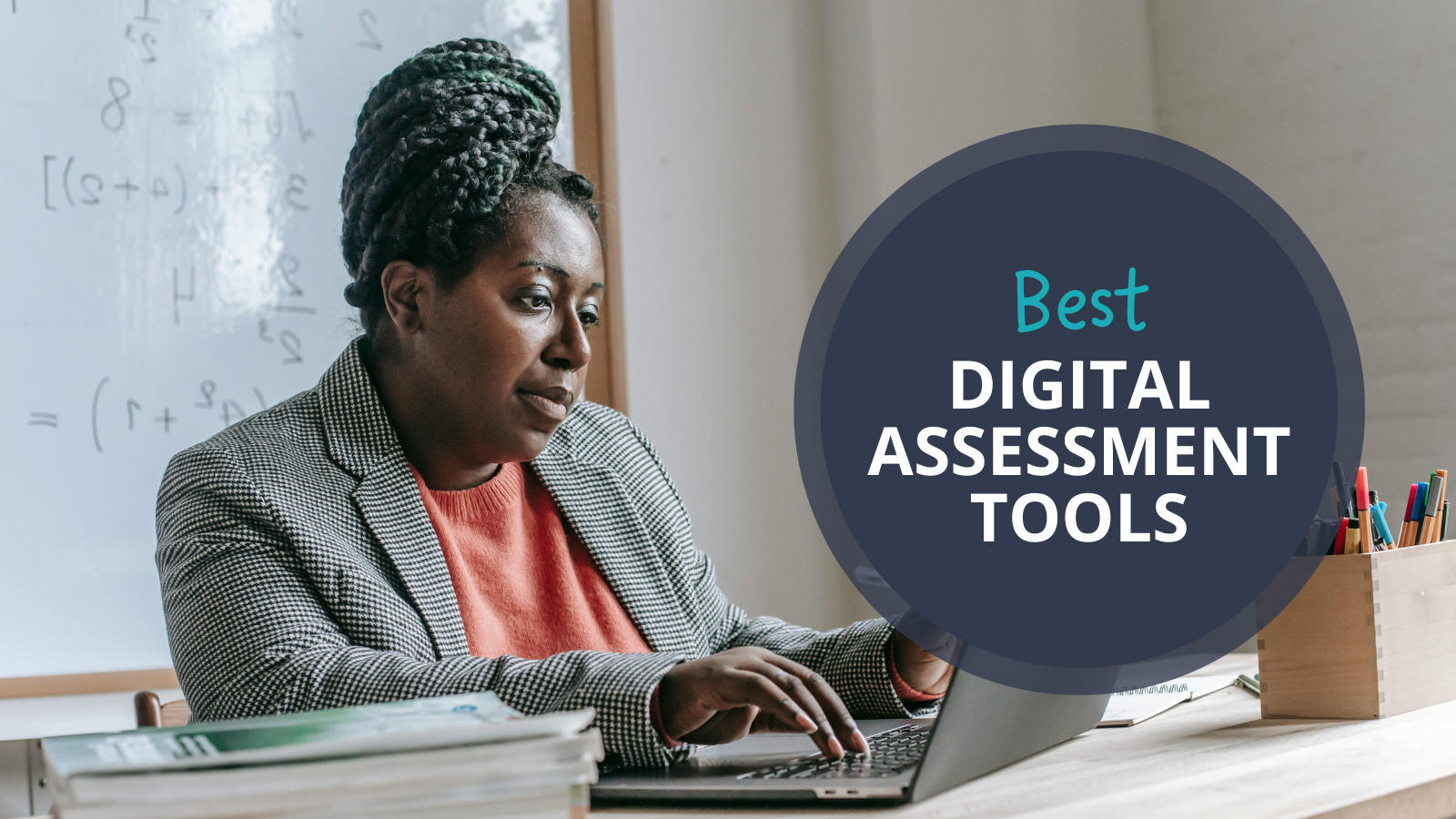Collaborative learning is an educational environment where students work together in smaller groups to achieve a common goal. Collaborative learning is analogous to the traditional learning model, in which teachers impact knowledge on students. Bruffee (1999), the most prominent name in collaborate learning, describes collaborative learning as “creates conditions in which students can negotiate the boundaries between the knowledge communities they belong to and the one that the professor belongs to” (p. 144). Collaborative learning and e-learning have been gaining momentum over many decades as research has proven how beneficial it is for students’ development and learning. It has become a focus of significant learning institutions (Gao, 2020; Gutierrez, Sanchez, Castaneda, & Prendas, 2017).
Collaborative learning allows students to be engaged and active participants in their own learning by sharing ideas, analyzing problems, and finding solutions to them. Together, they create knowledge and achieve learning outcomes (Downing, 2017; Ramos, Cattaneo, de Jong, Espadeiro, 2022).
This paper will investigate some key principles and advantages of collaborative learning, explore some of the challenges, and discuss best practices for effectively implementing collaborative learning activities in the classroom.
Core Principles of Collaborative Learning
Some core principles of collaborative learning include individual accountability, promotive interaction, social skills, positive interdependence, and group processing.
With individual accountability, students are held responsible for their part of the team project and ensuring their contribution is part of the overall outcome. Individual contribution prevents social loafing, where some students rely on others in the group to complete the team’s work, and they take some credit.
Promotive interaction is where students facilitate and encourage one another when completing the task. Promotive interaction involves concept explanation, idea challenging, providing positive support and feedback, and, more importantly, the student’s involvement in the learning process (Raihan, 2014).
Social skills such as conflict resolution, communication, and leadership are necessary for a cohesive group to function effectively (Hadi, Hassan, Razzaq, Mustafa, 2015). These skills are required for these students to be successful.
Positive interdependence means that students can succeed and fail as a group – because the team’s success is a result of the contribution of every member. Positive interdependence creates a communal synergy that allows the students to work together and succeed by achieving their shared goals. Finally, group processing involves how the group reflects on how well they work to achieve their goals and preserve effective working relationships.
Group processing also allows the group to identify and examine areas of improvement. With proper implementation, collaborative learning can be very beneficial for students.
Benefits of Collaborative Learning
A significant advantage of collaborative learning is its promotion of deeper learning and understanding. By allowing the development and discussion of their ideas, articulating their thoughts, and hearing numerous angles of view, students are pressed to be more engaging with the course content. This can lead to significant retention and the capability to apply knowledge novelly. Essential skills like critical thinking, communication, problem-solving, and teamwork can be developed through collaborative learning (Wagino, Maksum, Purwanto, Krismadinata, Suhendar, & Koto 2023). As students work together in a group context, they learn to accept different points of view, ask probing questions, and bargain to reach harmony. These skills are precious in academic, personal, and professional lives.
Additionally, collaborative learning can enhance student motivation and commitment. The social environment of the group can be enjoyable and exciting for several students compared to independent study or traditional classroom or online lecturing. The idea of students’ engagement and participation, shared objectives, and accountability can significantly strengthen students’ investment in their learning process (Wagino, Maksum, Purwanto, Krismadinata, Suhendar, & Koto, 2023). Collaborative learning benefits students from diverse backgrounds and cultures. These benefits are salient when working together and appreciating different perspectives and cultures. Collaborative learning can also promote inclusion, social skills, and respect.
Finally, collaborative learning can reduce the professor’s workload because the students support each other’s learning. As a result, the professor can assume a facilitator’s role, guide, and observe rather than lecture and direct learning.
Some Challenges and Considerations
Even though collaborating offers several advantages, it also poses many challenges that professors should be aware of and be prepared to address.
A common problem is the probability for unequal participation by social loafers who do not want to contribute equally like others in the group. Other group members can be resentful of this, and the result can undermine collaboration benefits. Professors should be careful in the formation of groups, implement individual accountability criteria, and use peer evaluation to abate this problem. Proper group structure, interaction, participation and accountability can arrest this issue (Sharan & Sharan, 2021). Collaborative learning involves complex classroom management, which is different from traditional lecturing. To be effective, professors should be skilled at constructing activities, monitoring group dynamics, and enabling dynamic discussions. Lack of planning, preparation, and support can lead to chaos, unproductive, and disorganized group work. Another challenge is to ensure that collaborating learning aligns with learning objectives, activities, and assessments. The targeted knowledge and skills may only be effectively built if the group work is designed correctly. So, integrating collaborative activities effortlessly into the total course structure is imperative. There may be students who are resistant to collaborative learning because they are accustomed to being passive, used to teacher-centered approaches, and use direct traditional teaching. However, this can be overcome by showing the reasoning and advantages of collaborative learning and at the same time, scaffolding the transition, students having shared knowledge and structured learning activities to overcome students’ averseness (Dillenbourg, Jarvela, Fisher, 2009).
Finally, collaborative learning does require adequate time and space for groups to get together. For collaborative learning to work, professors must balance activities with instructional approaches to ensure that groups have adequate time and resources to finish their undertakings. While collaborative learning offers substantial benefits, professors need to thoroughly plan, organize, structure, facilitate, and deliver activities to fully maximize their effectiveness.
Best Practices for Implementing Collaborative Learning
Reflecting on the discussions and issues outlined above, here are some best practices for effectively implementing collaborative learning in the classroom:
Clearly define learning objectives that align with group activities. Collaborative learning activities need to be thoroughly designed to support specific learning goals. Professors must consider how the group work will build on intelligence, expertise, and character.
Form groups strategically. A group should typically have three to five members to make it easy to manage. Heterogeneous grouping that mixes students of diverse skill levels, backgrounds, and perspectives can promote deeper learning. However, homogeneous grouping may be appropriate in some cases.
Provide structure and scaffolding. There should be clear instructions, roles, processes, and procedures to keep students on task during collaborative learning activities. Professors may need templates, good practices, and prompts to model effective group processes to guide the group work.
Monitor and facilitate group dynamics. During collaborative activities, professors should walk around and observe the groups, provide guidance, and intervene when needed to address any dysfunctional dynamics, identifying any social loafing, or ensure that all members are fully engaging and participating.
Incorporate individual accountability. To prevent free-riding and social loafing, professors should include individual assessments such as quizzes, exams or reflections, and group work. Peer evaluation can also promote personal accountability.
Build students’ collaboration skills. Collaboration skills can be developed by explicitly teaching and having students practice critical social and communication skills like active listening, giving feedback, and conflict resolution. These skills can enhance the effectiveness of collaborative learning.
Debrief and reflect. Debriefing is essential at the end of a collaborative activity. It allows groups time to reflect on their performance and outcome, which can inform and be used for future improvements.
Provide necessary resources. Students’ access to educational materials, technology, space, and accommodation of different kinds can lead them to complete the collaborative task successfully.
Continuously improve. Just like everything else, there will be continuous improvement. Professors can enhance their collaborative learning activities over time by collecting feedback from students, observing group dynamics, and analyzing learning outcomes.
Conclusion
Collaborative learning could be a powerful pedagogical approach that promotes more profound understanding, development of essential skills, and greater student engagement and motivation. Students actively construct knowledge and learn from each other by working together in small groups. However, as discussed above, effectively implementing collaborative learning can require careful planning, scaffolding, and facilitation by the professor. Conversely, addressing potential challenges related to classroom management, uneven participation, and alignment with learning objectives is crucial. By building students’ collaboration skills, providing structure and support, and following best practices such as strategic group formation, teachers can harness the benefits of collaborative learning to enhance student learning and prepare them for success in academic and professional settings. As educational approaches evolve, collaborative learning will likely remain an essential and influential pedagogy that fosters the skills and dispositions needed for the modern world.
George Ojie-Ahamiojie, EdD, is an associate professor of hospitality and tourism at the University of Maryland Eastern Shore. In 2019, he received the Worcester County of Maryland Drug and Alcohol Abuse Award for Outstanding Achievement in Prevention. Governor Larry Hogan and Senator Chris Van Hollins of Maryland also presented him with citations for his work in drug and alcohol abuse prevention.
References
Brufee, K. A. (1999). Collaborative learning: higher education, interdependence, and the authority of knowledge (2nd ed.). ERIC.
Dillenbourg, P., Järvelä, S., & Fischer, F. (2009). The evolution of research on computer-supported collaborative learning. In N. Balachef, S. Ludvigsen, T. d. Jong, A. Lazonder, & S. Barnes (Eds.), Technology-enhanced learning (pp. 3–19). Springer. https://doi.org/10.1007/978-1-4020-9827-7_1
Downing, J. J. (2017). Design principles for applied learning: Bringing theory and practice together in an online VET teacher-education degree. International Journal of Training Research, 15(1), 85–102. Doi: 10.1080/14480220.2017.1313756.
Gao, Y. (2020). International collaborations in the VET sector: Motivations and challenges. Journal of Studies in International Education, 24(2), 232–248. Doi: 10.1177/1028315319835531.
Gutiérrez, I., Sánchez, M. M., Castañeda, L., & Prendes, P. (2017). Learning e-learning skills for vocational training using e-learning: The experience piloting the (e)VET2EDU project course. International Journal of Information and Education Technology, 7(4), 301–308. Doi: 10.18178/ijiet.2017.7.4.885.
Hadi, M. Y. Ab., Hassan, R., Razzaq, A. R. A., & Mustafa, M. Z. (2015). Application of thinking skills in career: A survey on technical and vocational education training (TVET) qualification semiprofessional job duties. Procedia – Social and Behavioral Sciences, 211, 1163–1170. Doi: 10.1016/j.sbspro.2015.11.155.
Raihan, A. (2014). Collaboration between TVET institutions and industries in Bangladesh to enhance employability skills. International Journal of Engineering and Technical Research (IJETR), 2(10), 50-55.
Ramos, J. L., Cattaneo, A. A. P., de Jong, F. P. C. M., & Espadeiro, R. G. (2022). Pedagogical models for the facilitation of teacher professional development via video-supported collaborative learning. A review of the state of the art. Journal of Research on Technology in Education, 54(5), 695– 718. Doi: 10.1080/15391523.2021.1911720.
Sharan, Y., & Sharan, S. (2021). Design for change: a teacher education project for cooperative learning and group investigation in Israel. In N. Davidson (Ed.), Pioneering perspectives in Cooperative Learning: theory, research, and classroom practice for diverse approaches to CL (pp. 165–182). Routledge.
Wagino, W., Maksun, H., Purwanto, W., Krismadinata, K., Suhendar, S., Koto, R. D. (2023). Exploring the full potential of collaborative learning and e-learning environments in universities: A systematic review. TEM Journal, 12(3), 1772-1785. DOI: 10.18421/TEM123-60, August 2023.
The post Using Collaborative Learning to Elevate Students’ Educational Experiences appeared first on Faculty Focus | Higher Ed Teaching & Learning.
Collaborative learning is an educational environment where students work together in smaller groups to achieve a common goal.
The post Using Collaborative Learning to Elevate Students’ Educational Experiences appeared first on Faculty Focus | Higher Ed Teaching & Learning. Faculty Development, collaborative learning, student learning Faculty Focus | Higher Ed Teaching & Learning





